In the 1990s, amid stints in prison, a murder charge and assorted other legal woes, the rapper Snoop Dogg rocketed to stardom via albums like Doggy Style and Tha Doggfather (both released on Death Row Records).
Today, three inmates at Craggy Correctional Center on Riverside Drive — Sherman, Crumpet and Louise — are similarly waiting to gain their release. But how did these dogs wind up behind bars to begin with?
The three canines have been at Craggy since early August through a program called A New Leash on Life, and they may be sprung sometime next month. In the meantime, they’re working with carefully selected adult male inmates, who use positive reinforcement and repetition to teach obedience, house training and socialization. The program is in place in about 15 minimum-security facilities across North Carolina; Craggy, though, is one of the first medium-security prisons in the state to pair inmates with dogs whose owners have abandoned, abused or even injured them.
Crumpet was emaciated when she first landed at Animal Haven of Asheville, the nonprofit that funds and facilitates the local program. Each participating prison partners with a local sponsor, a volunteer animal trainer and merchants or civic groups that can provide needed supplies and services.
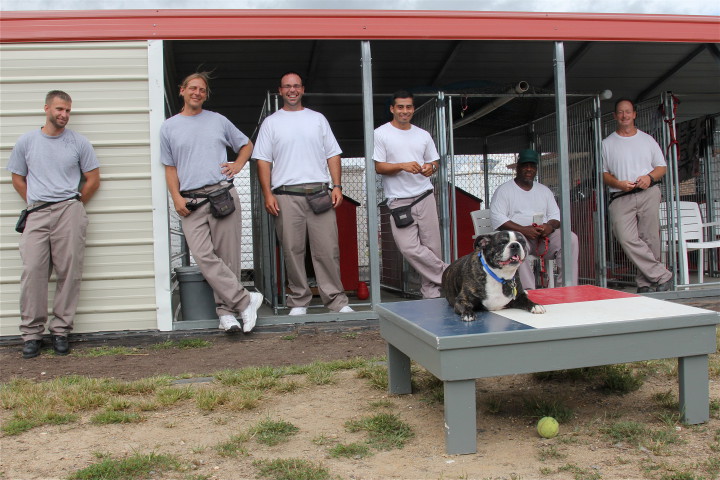
Co-founder Trina Hudson says she hopes New Leash will help the 9-year-old English bulldog and her two canine companions find permanent homes.
“Crumpet has been bred to death,” inmate Chris Tarantino explains. When she arrived at Craggy, “She was in really bad shape,” having been “part of a puppy mill. There’s no telling how many times she gave birth; her teeth were even smashed out by the breeder for mating purposes. You would think a dog abused so badly wouldn’t want to be around people, but when she walks through the prison yard, she wants affection from everybody she sees.”
Tarantino and five other Craggy inmates are enrolled in an apprenticeship program leading to certification as a veterinary assistant. Participants in the statewide program must complete 4,000 hours of on-the-job training plus 288 hours of related instruction provided either through the local community college or a volunteer animal trainer.
But there’s far more at stake than just vocational training, notes Shawn Burleson, who manages the Craggy program. Besides enabling inmates to give back to the community by helping these animals find permanent homes, “They are good for each other,” she says. “It heals the dogs and it heals them.”
Productive partnership
Richard Elingburg, Craggy’s assistant superintendent of programs, loves dogs. And about three years ago, having seen the results the program had produced at the Swannanoa Correctional Center for Women (where Animal Haven had been working for a number of years), he reached out to Hudson. After a series of interviews with Hudson, Animal Haven co-founder Barbara Bellows and prison officials, A New Leash on Life was launched at Craggy. To date, 32 dogs have completed the local program, and all have been adopted.
A kennel in the prison yard can house up to three dogs, and a shed contains food, flea and tick medication, training equipment and a long row of educational books, all provided via donations from the community to either the nonprofit or the Craggy Community Resource Council.
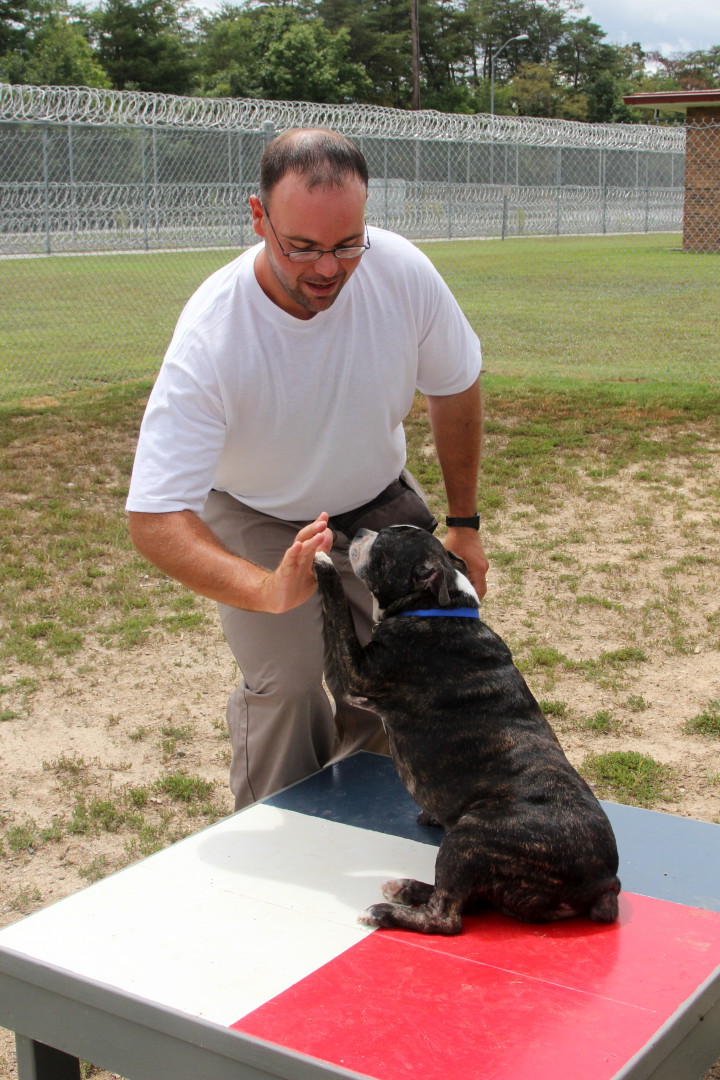
In addition to its involvement with New Leash, Animal Haven also offers “protection and refuge for homeless and abused animals,” including farm animals, according to its website. But the East Asheville facility’s capacity is limited, and partnering with the Buncombe County shelter enables the nonprofit to save more dogs.
In the meantime, notes Elingburg, New Leash also “reduces tension with the inmates: It’s hard to be tense when you have a goofy dog looking up at you. And I hate to see the dogs go. When they get adopted and we’re waiting on new ones, the inmates are constantly asking us when we’ll get more dogs.”
Tarantino agrees. “It’s kind of like being at home for a second,” the inmate explains. “When you pet the dog, it lowers your blood pressure, and it also raises the mood of the whole group.”
Road to recovery
Crumpet, Sherman and Louise met at the Buncombe County Animal Shelter. The facility aims to save as many of its charges as possible, but due to insufficient resources, some wind up on the canine equivalent of death row, awaiting euthanasia. Hudson brought these three dogs to Animal Haven for continued medical treatment and then placed them at Craggy.
Before landing at the shelter, Crumpet had been abused and Sherman was a stray. Louise, meanwhile, had endured a series of misfortunes beginning with abandonment. She finally found a home with an older couple, but health problems rendered them unable to continue caring for the dog, and they took her to the shelter.
Louise’s owners, notes Hudson, had legitimate reasons for giving up their dog, but some pet owners opt to hand off their animals just because they’re moving, experiencing financial stress or having trouble with training. “We’re a disposable culture,” she laments.
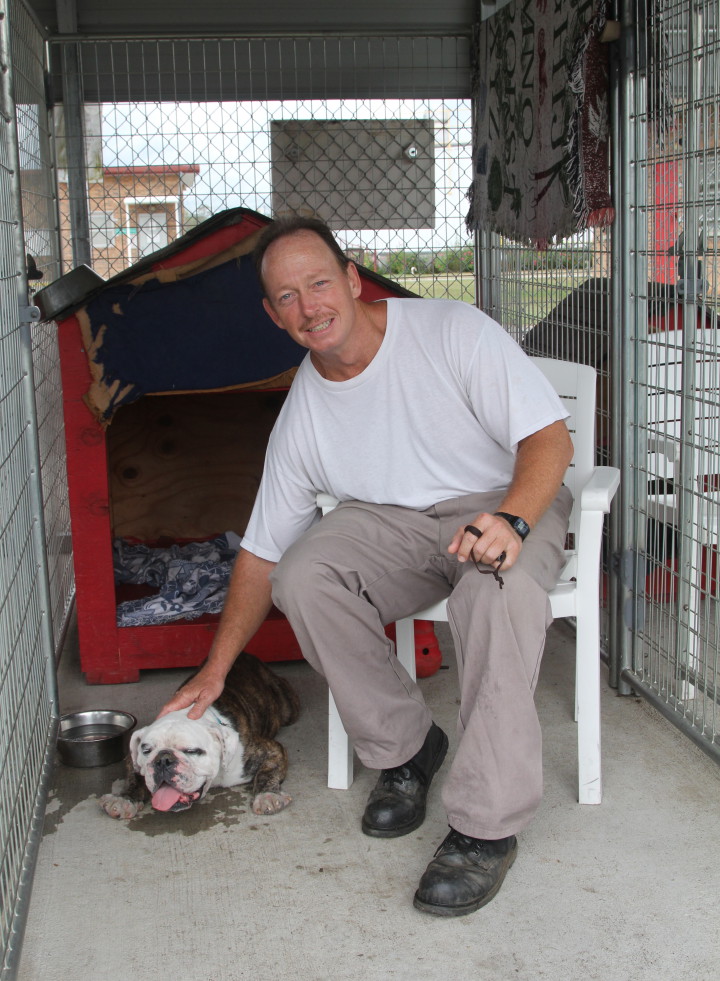
For the animals, however, “Love is the main thing they need,” says inmate Kenneth Hardy, adding, “You’d be surprised how emotional dogs are.”
In 1981, Sister Pauline Quinn, a Dominican nun, founded a pioneering prison dog-training program at the Washington State Correctional Center for Women. Similar programs soon began popping up along the East Coast, first at the North Central Correctional Institution in Gardner, Mass., and shortly after in Maine. A year later, staff in the Maine program reported significantly decreased tensions in the prison.
The New Leash program, launched more than a decade ago at the Black Mountain Correctional Center for Women, has trained some 2,100 dogs across North Carolina, with a 92 percent adoption rate for those completing the training. Over 2,000 inmates have worked as trainers; more than 300 have gained certification, and about 40 more are currently pursuing apprenticeships.
Every dog has its day
Even after the dogs are adopted, notes Burleson, the trainers “never forget them. You can bring up a name, and they’ll tell you all about the animal, their history before coming to Craggy, their personality and even when they were adopted.”
Asheville resident Debbie Sprouse has taken not one but two Craggy graduates into her home. Ingrid Hansen, a friend who serves on the Craggy Community Resource Council, told Sprouse about Cooper, a French bulldog/terrier mix who’d become a staff and inmate favorite despite the horrible shape he was in when he arrived.
“I went out there to meet Cooper and his two trainers,” remembers Sprouse, “and I was just blown away by how much love and care they had for this animal. I thought, I’m not here to see if Cooper is a good fit for me — I’m here because these guys want to see if I am good enough for Cooper.”
After the dog’s graduation from the program, the inmates handed him over to Sprouse along with a journal that chronicled his arrival at the prison, how long he stayed, details of his training and, on the final page, this message: “Cooper is loved by so many of us here. We are so happy that he has a good home, and I just want you to know you are getting a great dog, and we hope you take care of our little buddy.”
“I just burst into tears,” Sprouse recalls, adding, “I don’t know how to convey to people the feeling that I had when this prisoner is holding this dog and he’s saying to me, ‘He doesn’t like to get his feet wet sometimes; he doesn’t like to go out when it’s cold. Sometimes he gets little spots on his tummy.’” I mean, it was just the most compassionate thing to witness. This program has done so much for these prisoners: Not only are they saving the lives of these animals, who were probably going to have a hard time getting adopted, but these prisoners’ lives are changed for the better.”
Sprouse even takes Cooper back to Craggy to visit with the staff and inmates — and one of those visits led to another adoption. “Cooper’s trainer said, ‘We have this great dog named Fizgig. He is this crazy, goofy dog, and we’re afraid that he won’t get adopted. We think he would get along really well with laid-back Cooper, so if you’re thinking about getting another dog…’ Well, that’s all he had to say,” Sprouse says.
The New Leash program, notes inmate Buddy McKay, “takes two things that are oftentimes severely broken: people and dogs that have ultimately lost their way, or been discarded, or rejected for whatever reason. Putting them together creates a perfect situation by embarking on an eight- to 12-week journey of responsibility, structure and self-purpose. The end result, or silver lining, of this journey is a healing and a second chance for us and the dogs. Perhaps the real question is: Who saved who?”
Animal Haven of Asheville (299-1635; animalhavenofasheville.com) is at 65 Lower Grassy Branch Road in East Asheville. To support the local New Leash program, send a check — payable to Animal Haven of Asheville and earmarked for the prison program — to P.O. Box 9697, Asheville NC 28815.
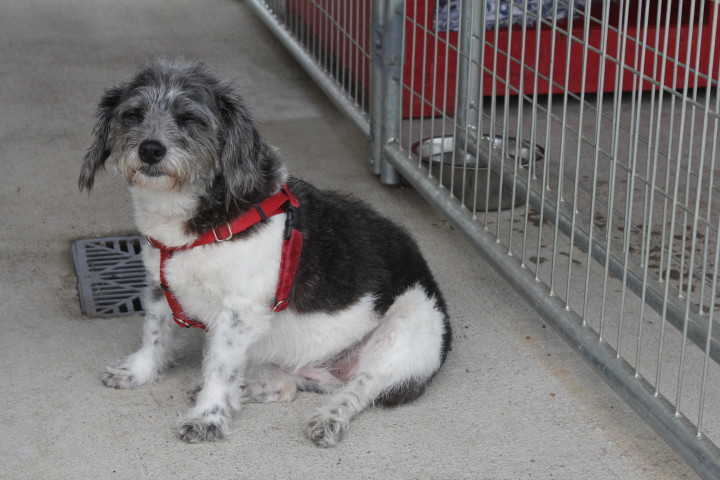



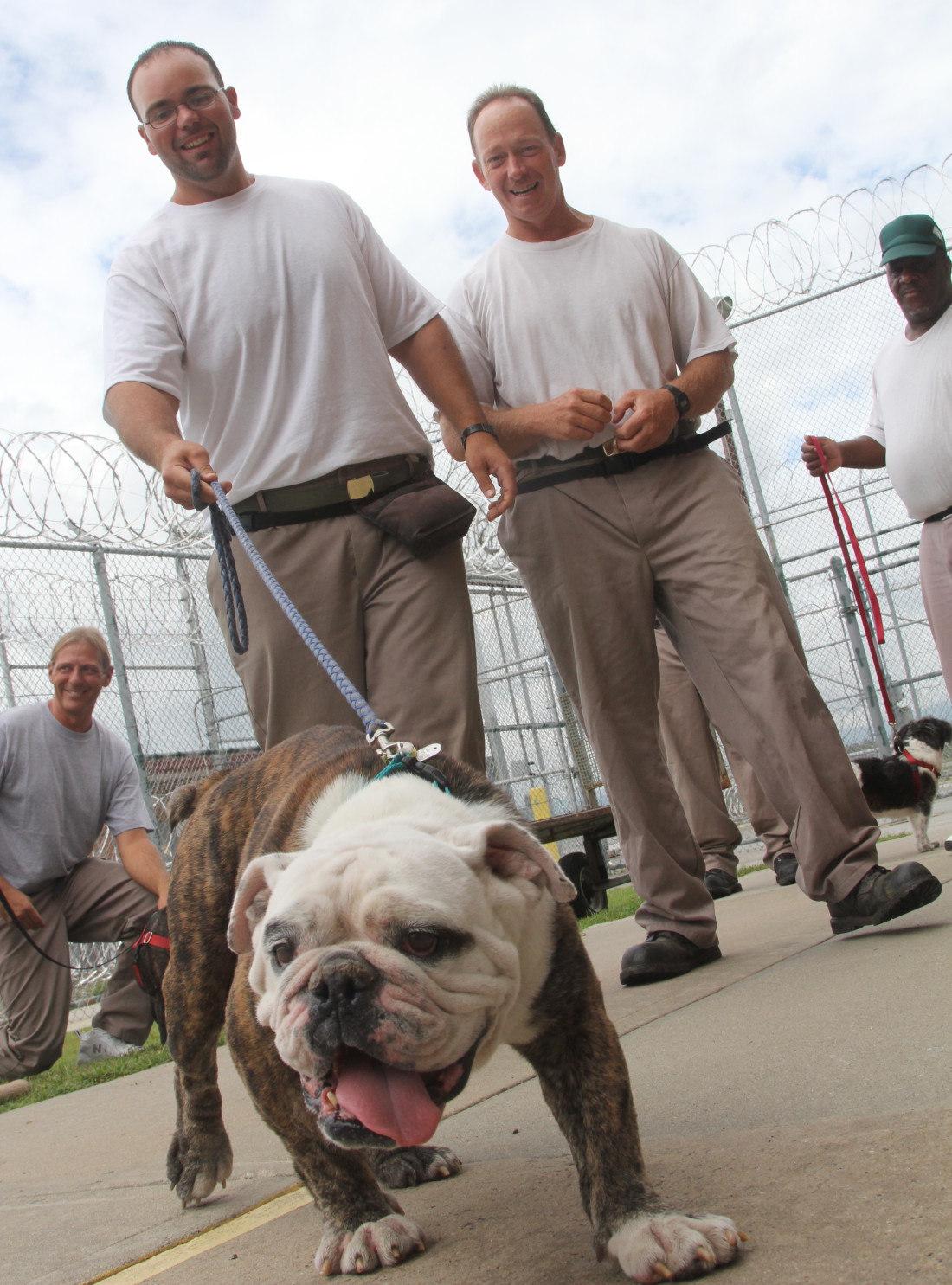


What a great story!